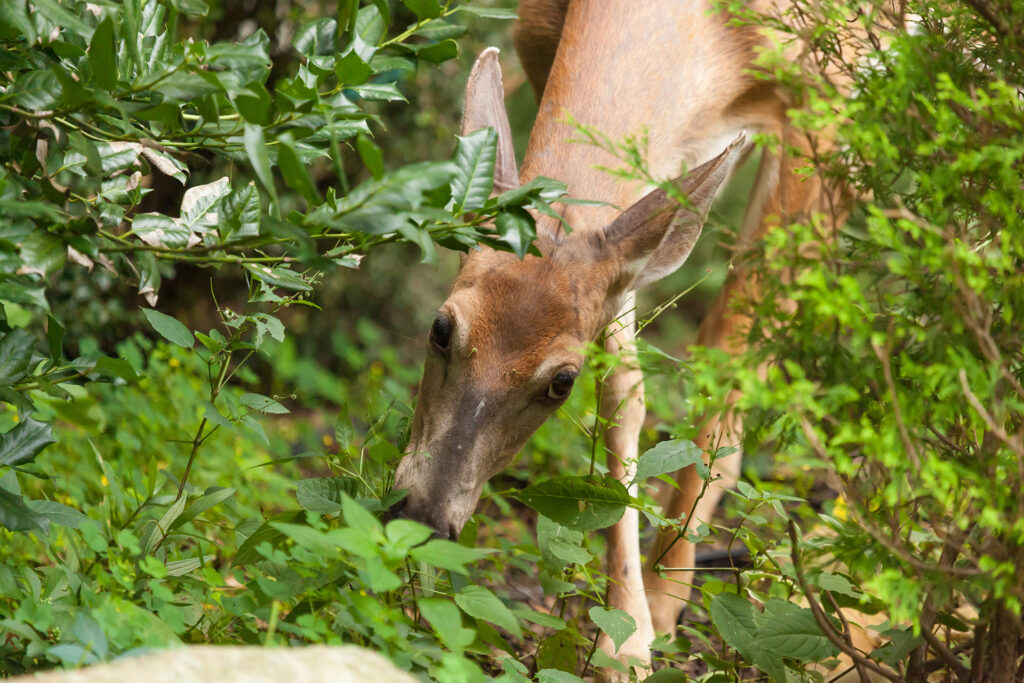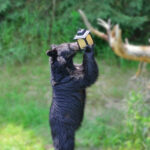Yes, they’re cute, but the havoc deer can wreak is nothing to fawn over.
by Mitch Rustad
I’ve only been in one car accident in my life—and not even with another car. One night, on a road trip through Yellowstone, I hit a deer. Happily, I wasn’t driving fast, the impact was minimal and everyone, including the deer, walked away unscathed. Phew. I’ve had far safer, even pleasant encounters with these hoofed beauties, too. They’ve wandered past me on summer evenings on Fire Island in search of snacks and they were common everywhere in Northern Minnesota, where I grew up.
For better or worse, white-tailed deer, the most numerous and widespread large mammal in the Catskills, are a fact of life here, and the human/deer relationship can be, well, complicated. “People around here love and hate deer,” says Ryan Trapani, Director of Forest Services, Catskill Forest Association, based in Arkville, NY.
Gorgeous and agile as they may be, deer can inflict plenty of damage on forests, plants, other wildlife, motorists and yes, our backyards. “Deer are the chief consumer of vegetation in the woods,” Trapani says. “They dictate what grows five feet down, which then affects all the wildlife that depend upon plants that grow five feet down.” Not only does this reduce forest regeneration over time, but it also results in what Trapani calls a deer “browsing issue,” especially a problem for homeowners near forested areas. Yards mimic an opening in the woods that deer tend to wander into because they often prefer the grub on offer there to what’s in the woods.
“Deer are still my favorite animal, but they’re also hungry and tend to eat everything in sight,” Trapani says, including clover, young grass and buds off a variety of trees found in many backyards. Co-existing will continue to be a way of life for Catskills home dwellers, but if you’re looking to be proactive, there’s one ready solution: “Fencing is the best way to save your fruit trees, legacy trees and your yards in general,” Trapani says. And if fencing’s not an option, he suggests opting for the type of plants deer won’t eat. According to the New York Botanical Garden, deer despise pot marigolds, hardy geraniums, lavender, sage, peony, forsythia, common lilac and others.
Time to put Bambi on a diet.















Comments are closed.